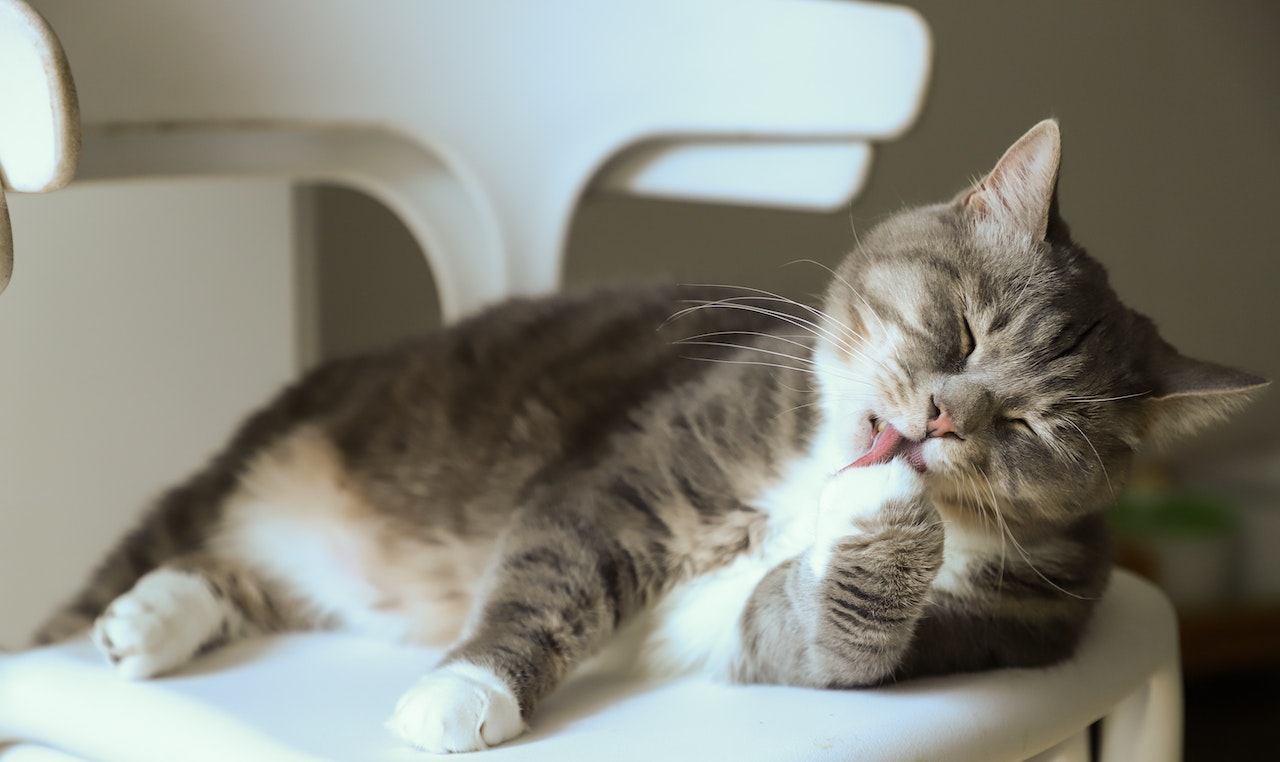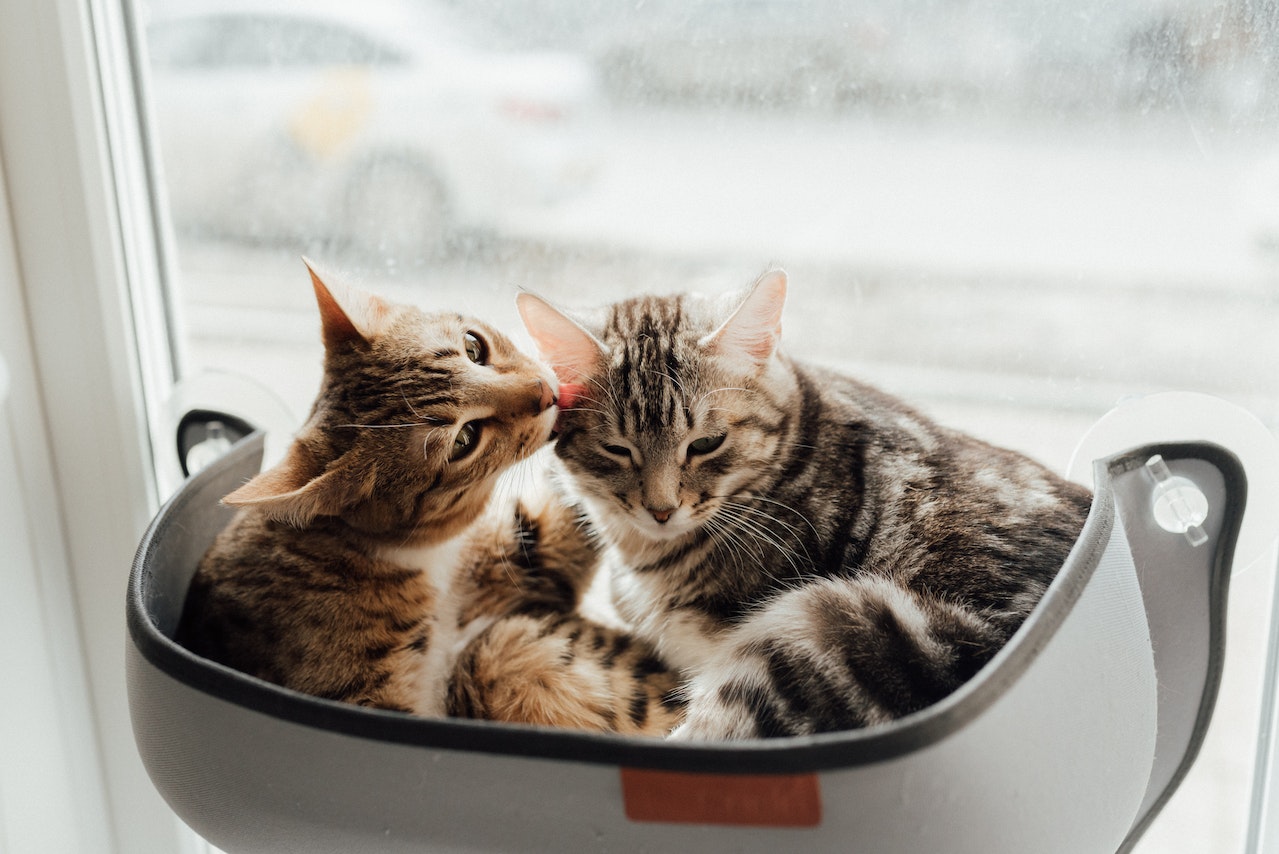Be it after the smallest meal, the shortest nap or just in between at a suitable opportunity and with leisure. A well-mannered house cat always has time (to have) for careful and thorough grooming.
Because together with the resistant, yet flexible skin and supported by the sweat glands and blood vessels, the fur gives the supple predator's body mechanical security and regulates the feline heat balance.
In all cats, the fur itself consists of soft, wavy, heat-insulating wool hair (undercoat) and the guard and outer hair, which are relatively water-repellent and show the fur color or fur pattern of the velvet paw. All vital and therefore valid reasons to be careful with your own furry body shell.

More than packaging
Incidentally, behavioral biology counts licking and washing the fur as well as stretching or rolling around a cat as so-called comfort behavior - i.e. among all activities related to personal hygiene. Which is why the intensity of maintenance and thus also the condition of the fur, in addition to the individual physical condition, reveals a lot about the current state of mind of the velvet paw. Because cleaning also releases endorphins. These endogenous happiness hormones and painkillers increase the individual well-being of a grooming cat.
Various care products
When observing your cat, you will certainly have noticed a wide variety of "cleaning programs":
The nibble
With its twelve tiny incisors, the cat nibbles at skin and fur, eliminating any tangled hair along the way. It is quite normal if the necessary rapid movements of the jaws continue for a while after the nibbling.
the scratching
Body parts with matted fur, which the cat's tongue cannot or only with great difficulty close, the cat treats with its extended claws.

the licking
With the help of the tongue and the mechanical papillae located on it, the velvet paw frees its fur from impurities. The saliva that is also distributed evaporates as a side effect and thus cools the animal in a hot environment.
the washing
The cat cleans its face and auricles with its front paws, which it repeatedly licks and moistens with it. She also manages to reach and care for parts of the body that are inaccessible to the tongue.
More than just cleaning
In contrast to the previously described components of individual cat grooming, auto-grooming, the social behavior is mutual grooming, so-called allo-grooming. Our kitties devote a relatively large part of their daily care effort to him.
In the adult cat, this mutual licking serves both to groom each other's fur and to exchange pheromones or to pass on a kind of "group smell".
In this way, well-disposed cats maintain social peace within the community - but they also preserve and strengthen it after more or less agitated confrontations.

social body care
Sometimes the cleaning is only practiced on one side, with just one animal licking itself and the other animal being licked. These roles are variable and can change.
Some behavioral biologists see the mutual licking as an expression of a hierarchy. In their view, the licking cat could be the superior animal, or the defeated cat could be showing the appropriate behavior as a gesture of submission.
Incidentally, it is typical for mother cats to lick their offspring. In addition to body care, they also stimulate the kitten's intestines and bladder in this way so that they relieve themselves. And even towards the growing offspring who are able to groom themselves on their own, a queen maintains her grooming as a form of social affection.
Outside the "norm"
It is typical for velvet paws that are confused, excited or confronted with a frightening situation to lick their fur several times. This so-called jumping movement outside the "norm" offers the irritated cat a kind of valve to divert its energy and thus solve the emotional conflict. It is harmless and will not reappear after the constellation has ended.
If, on the other hand, a cat is under constant stress, it may change its fleeting brushing of its fur into a (permanently?) increased cleaning behavior - the so-called over-grooming.
Depending on the intensity, the treated area can range from local hair loss to extensive skin changes.
In stark contrast to this is the missing or greatly reduced cleaning behavior. Here, the velvet paw loses all interest in activities usual for cats, such as grooming .
The triggers for this are manifold: the loss of an important social partner (species disease, humans), serious organic diseases or the onset of senile dementia are just a few of the possible reasons. In connection with both behavior changes, you should definitely consult your trusted veterinarian for diagnosis and appropriate treatment.









